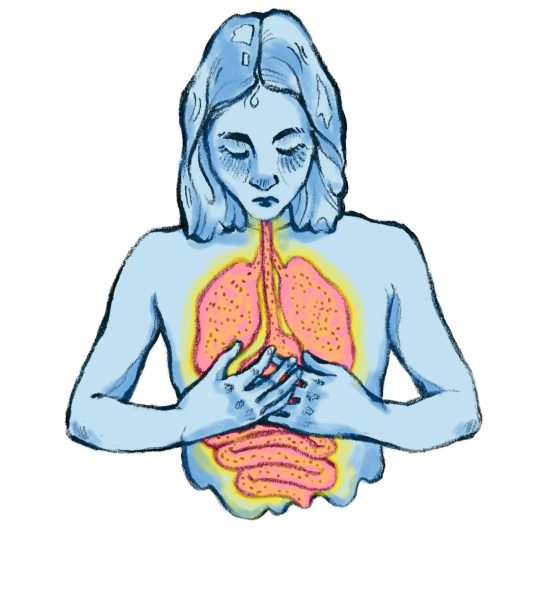
If there’s anything I could never escape from in this world, it would definitely be plastics — they’re everywhere. From my first morning bowl of yogurt parfait to takeout salads for lunch and dinner, it follows me wherever I go, and I’m so sick of it. Living in a society where ever-changing trends unremittingly fuel overconsumption, almost everything has become dispensable.
So many of us don’t even think twice about throwing things away once they no longer serve us since we know our world will continue producing them — selling us things we think we need and capitalizing on our never-ending desires for materialistic things. However, despite our reckless ability to dispose of plastics at the drop of a hat, they never truly leave us. They now live among us; in our plastic-filled world, they are now within us, consuming us alive.
Microplastics are pieces of plastic debris less than five millimeters in size. Since plastic became common in everyday use after the Second World War, its popularity and widespread use increased in the 1960s and 70s until it transformed into a plastic pollution crisis. Plastic pieces were first found in the stomachs of several albatrosses in the 1960s. Now, they are found everywhere, including our own bodies, and take the form of microparticles completely invisible to our eyes.
Microplastics were first discovered in human bodies in 2022. They typically enter our bodies through two main routes: swallowing them through the food we consume and breathing them in. The fact that we are not only swallowing them through the food we consume but also breathing them in is beyond terrifying.
Plastic has become so entangled with our lives that we can no longer escape it. I yearn to live a life completely unreliant on plastic. But even if I try to evade it, it’s already within my system.
Microplastics are a silent killer. Some experts have argued that we are living in a plastic health crisis. Although the full extent of their effects on our health is still unknown, countless studies have noted that they can cause a wide variety of health issues, including respiratory disorders manifesting as lung cancers and asthma, neurological symptoms like dizziness and fatigue, and inflammatory bowel diseases.
Microplastics are now found throughout our bodies — including in the blood, lungs, liver and lower limb joints. Scientists have even found further evidence that they are accumulating and rapidly magnifying in our brains.
In an interview I conducted to gauge the public’s awareness of microplastics’ impact on our bodies, freshman Shrijana Tamang was not even fazed when I shared the facts and discoveries of microplastic research.
When I asked Tamang if she sees herself transitioning to a plastic-free life, she said it’s increasingly difficult “because everything comes packed with plastic.” Even fruits and vegetables that have natural and compostable wrapping are wrapped in plastic. Our self-care products are infused with microplastics. Our clothes are made of synthetic materials, like polyester and nylon, that shed tiny plastic fibers when washed.
Plastics are everywhere; it no longer surprises us to know that they are inside our bodies. It shouldn’t be like that. But with our materially-obsessed world, it has ultimately become the dominant form of living.
Because of its sheer uniqueness, it has managed to define a whole generation that is now experiencing the effects of over-reliance on plastic. The plastic pollution crisis has created a generation that transcends the unique characteristics of each age group. From Baby Boomers, who first emerged in 1946, to Generation Beta, born in this new year, our generational differences blur in the face of a shared reality — living in an era dominated by plastic and now microplastics.
We are in dire need of transfiguring a new way of life not driven by the capitalist model of consumption and reckless production. Plastics indeed make our lives easier and cheaper. But their effects on our health significantly outweigh their uses, and we are in the midst of a plastic health crisis.

